
|
Lorna Mills and Sally McKay
Digital Media Tree this blog's archive OVVLvverk Lorna Mills: Artworks / Persona Volare / contact Sally McKay: GIFS / cv and contact |
View current page
...more recent posts
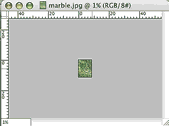
"To all unpopular kids everywhere. Don't give up. You will win one day! To the untold millions of innocent farm animals who die each year for no good reason. You will be saved. The game's much bigger than you think. We are all forever. Turn off the telly. Don't throw stones. Forgive yourself."From the dedication to A Life of Pete Townshend by Geoffrey Giuliano, which I haven't read yet but am saving with relish for a rainy(snowy) day.
Schwarz has posted an excellent collection of quotes on "utopian plagiarism."
Teaser: "Not a machine, not nostalgia for vinyl, and most certainly not a happy digital camper, data trash is the critical (telematic) mind of the twenty-first century. Data trash loves living at that violent edge where total human body scanning meets an inner mind that says no, and means it."
Nostalgia for analog video from the days before homemade images were infinitely malleable, cultural obsession with the empty trappings of stardom, a vague feeling of loss in art criticism for the judgements of an authoritative voice, the slippery nature of elegant theoretical abstraction, all these themes have cropped up recently on this blog, and will continue to do so. Here's some more, a quote from a really good piece by John Bentley Mays on Ydessa Hendeles' big show "Partners," published in Canadian Art last summer. The whole article is online here.
The era during which the work in this show was largely conceived, made and collected—the last quarter of the 20th century—witnessed the rise to great popularity among curators and collectors of an art of gadgetry and mechanical technique, with a philosophical vocabulary (borrowed from the social sciences) to complement it. The issues raised by this art of camera, videocam, computerized printing, digital image manipulation and so on were peculiar to a culture of machines: reproducibility, copy and copyright, authenticity, originality, the ontological status of the ready-made, or this or that mechanical replica. Moral questions, the discussion of ethical imperatives, were as deeply unfashionable among opinion-makers in the art world as in the world at large, where relativism and skepticism, the values of the social sciences, prevailed. (The last notable, credible moral art-world thunderings were pronounced some 20 years ago, by Benjamin H. D. Buchloh, when he laid a curse on the new European painting for its presumed crypto-fascism.)
I am not suggesting things in the period 1975-1999 could have been otherwise. Many in the generation that came of age in the 1960s, my generation, were left exhausted, by the mid-1970s, by the excess, hedonism and shallow idealism of the counterculture—by its extravagant proposals for liberation.
But without the connection to the world provided by moral discourse, the inner world of the 1970s became purely psychological, imaginary, obsessed by the fluid dynamics of sex and power. Ideas—real ideas, I mean, carrying moral conviction and leading to principled courses of action—carried less and less weight. The mental landscape of "Partners" inevitably reflects this desolate world of the late 20th century, its psychic homeland—the era's narrowed vision and emotional range, its diminished ambitions and withdrawn hopes.
On Thurday I'm gonna be on a panel moderated by Hal Niedzviecki, a man who's work I deeply respect, editor of the zine of zines, Broken Pencil. The topic of the panel is Hal's new book called Hello I'm Special: How Individuality Became the New Conformity. The book is about pop culture selling us on the idea that we should all be rock stars and seeding us with a deep craving and feeling of entitlement for our own celebrity status. But of course we're not all gonna be celebrities, and pop culture makes sure of that fact by keeping a monopolistic grip on the means of production of mainstream media. This creates disappointment and feelings of failure. Worse, rebellion is rendered meaningless, as rebelliousness itself is now a commodified style. The book raised some thoughts/responses for me:
- Celebrity is only a commodity when it is pursrued as an end in and of itself. Yes being cute and fuckable counts for too much in this world, but in fact, most forms of public recognition are actually the side effects of doing noteworthy work.
- Celebrity is a red-herring, a stand-in for meaning. Once we are fed, clothed and sheltered, looking for meaningful work is a top priority motivator. Recognition is a sign from the external world that we are doing something of value, but its the value we need, more than the accolades.
- Rebellion as a lifestyle choice deserves to be commodified! If you aren't bothered by anything in particular, why rebel? And if you are actually resisting something, who cares what you are wearing?
- Remember when Bank of Montreal bought "The Time's They Are A Changing" and tried to sell us financial services with ads of people holding up handwritten signs?...Remember when Billy Bragg reclaimed the song at a rally in Toronto during Days of Protest, belting it out over a tearful crowd who raised their voices with pride to sing along?...Anyone who's old enough to have been through their own pop sell-out dissillusion-and-reclamation experience, in short any who's lived through the past few decades of rising corporate culture...these people know that mass media will sell you your own soul, if you let it.
My kitty drawing is posted over on Tino's photo blog, Bike Lane Diary. The cat's in good company with lots of photos of intrepid winter cyclists.
quote from "Video's Body, Analog and Digital" by Laura U. Marks:
Among digital videomakers, one of the manifestations of the desire for indexicality is what I call analog nostalgia, a restrospective fondness for the "problems" of decay and generational loss that analog video posed. In the high-fidelity medium of digital video, artists are importing images of electronic dropout and decay, "TV snow" and the random colors of unrecorded tape, in a sort of longing for analog physicality. Analog nostalgia seems especially prevalent among works by students who started learning video production when it was fully digital.
[...]
While analog video suffers from bodily decay as the tape demagnetizes, digital video decays through "bit-rot", William Gibson’s evocative term for information loss that renders images in increasingly large and "forgetful" pixels. Crime TV shows us digital forgetting to blur faces into pixels. Artworks use it to metaphorize memory and information loss. In Déconstruction by Rémi Lacoste (1997), a shot of a building being demolished is rendered virtual by digital editing: the building reassembles, deconstructs again, and then deconstructs more terribly due to image compression, a kind of digital Alzheimer’s where the image is saved as just a few bytes of memory. Anthony Discenza’s The Vision Engine (1999), Phosphorescence (1999), and other works exploit the ability of pixelization to render the familiar strange. Phosphorescence begins with Rothkoesque images, gorgeous scumbled forms in deep red, lemon yellow, and blue-gray. Stripped of the digital algorithm that transformed them, the source images turn out to be just evening news broadcasts. Plundered images are manipulated so as to give us the immediacy of pre-symbolic perception that an Eric Siegel 1968 electronically synthesized video did [7].


Image above and text below are from Don Doyle's page at the US Atomic Veterans History Project website. Great photos and testimonials.
Our battalion, The 95th Combat Engineers were on site for the Turk shot. When it went off we were told that it was necessary for us to immediately leave the area and we left when the busses got there. There were teams of people with geiger counters to check us. We were brushed off with brooms as we entered the busses. I suppose that there was some radiation on our uniforms as the fallout cloud appeared to be drifting directly over us. We had no special equipment other than it was very cold and we had on all the cold weather clothing that we had.
We went back the next day and walked toward ground zero until we were told to go back. We passed various types of armored equipment that had been tossed around by the blast and also there were some pieces of the tower mixed in with it. I could identify something that looked like a huge turnbuckle that would have stretched the supporting cables. Also, there were some rabbits that were running around and appeared to be blind and had their fur singed.
The site also has an interesting section on declassified government documents.
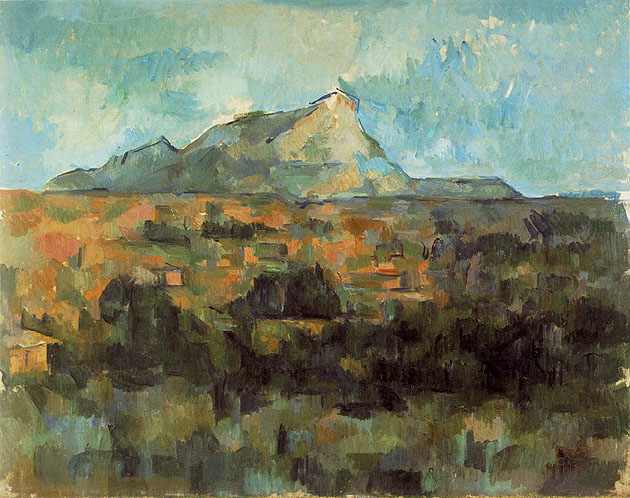 Paul Cézanne, Mont Sainte-Victoire Seen from Les Lauves (1904-06) [source]
Paul Cézanne, Mont Sainte-Victoire Seen from Les Lauves (1904-06) [source]Excerpt from a longer essay I am working on: In 1905, the painter Paul Cézanne was pushing himself relentlessly at the edges of perception, tossing torn paintings out the window in frustration (according to legend) and casting new depictions of space onto canvas with an unprecedented and hard-won level of abstraction. That year Einstein published three papers: one on Brownian Motion (providing a mathematical explanation for the apparently random, zig-zagging motion of particles suspended in liquid), one on special relativity (introducing the mind-bending physical law that the time and space are inextricably connected, such that the faster an object moves in space, the slower it moves in time), and a paper stating that light, previously considered exclusively as a wave, sometimes behaves like stream of discrete particles, tiny bundles or "quanta" of energy. The wave/particle theory laid the groundwork for quantum physics.
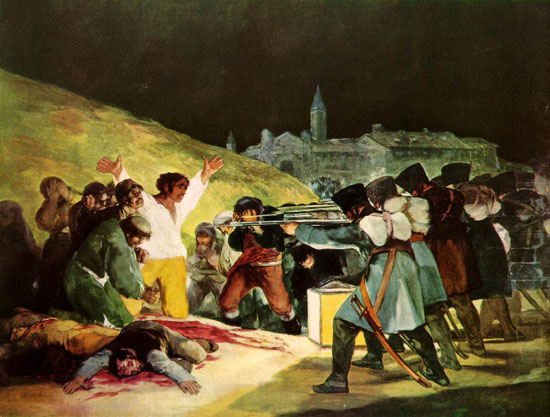
Goya, Executions on the Third of May, 1808 (1819). [source]
Techniques of interpretive illustration as used in art, according to James O. Young (see previous post), p. 82-84:
Selection: "A work of art can, by judicious use of selection, bring an audience to focus on objects which have been overlooked, or thought unworthy of careful attention."
Amplification: "Amplification is a technique common in all forms of satire. It is found in the paintings and engravings of Hogarth and in the plays of Sheridan. In general, amplification highlights certain properties and thereby draws attention to them."
Simplification: "Every object possesses a great many properties. When simplification is used in the representation of an object, some of these properties are down-played or eliminated. [...] One sub-species of simplification may be called idealisation. Idealisation is simplification that removes all of an object's imperfections."
Juxtaposition: "When juxtaposition is employed, two or more objects are simultaneously represented. [...] Classic instances of juxtaposition are found in Jane Austen's novels. She frequently juxtaposes a superficially engaging but morally flawed character with a type who, though lacking certain social graces, has true worth."
Correlation: "Correlation involves the representation of an object in such a way that audiences will see it in relation to a second object. The difference between juxtaposition and correlation is that juxtaposition involves the representation of both objects, while in correlation the second object is not represented. A good example of correlation is provided by Goya's The Third of May 1808 in Madrid: Executions on Principe Pio Hill. Here a Spanish patriot is represented in such a way that he resembles and recalls the crucified Christ."
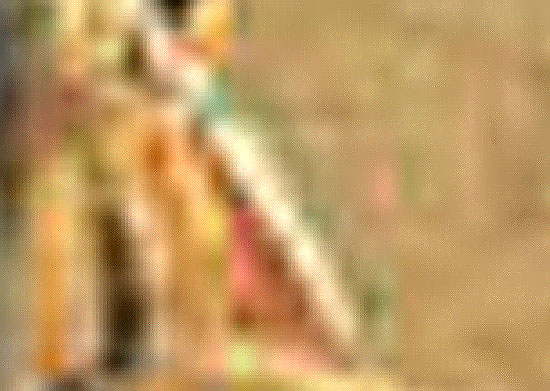
James O. Young (2001): The sciences and the arts are not completely dissimilar forms of inquiry. Art and empirical science have a common foundation: both begin with careful observation. Before artists or scientists can represent anything they must observe aspects of the world. [...] The arts and sciences resemble each other in another respect. They both represent objects in such a way that, ideally, insight is provided into the objects represented. [...] The representations produced by the arts and sciences can each contribute to knowledge of some matter in two ways. That is, the representations these modes of inquiry produce have two cognitive functions. They may provide testimony about objects and they may interpret objects. Testimony is simply a record of observations. Interpretation is the attempt to understand this record, either by means of theories or in some other way. [...] Since arts and sciences employ different sorts of representation, they perform each of the cognitive functions in different ways.
Testimony: "We may identify semantic testimony and illustrative testimony.To provide testimony is simply to provide information. The sciences frequently provide information by means of statements. [...] The testimony in works of art, on the other hand, is provided by means of illustrations from which information can be derived. So, for example, a painting by Canaletto is testimony about the appearance of San Marco.
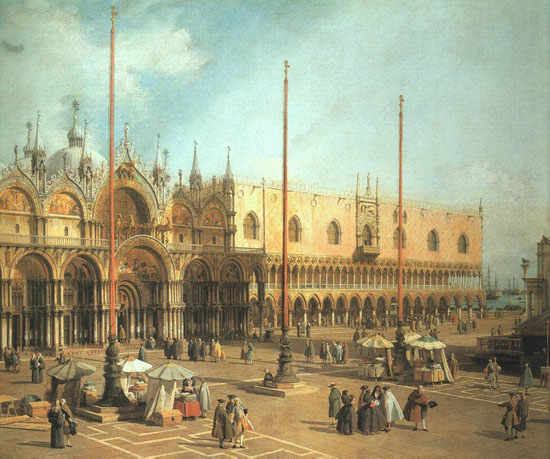
Canaletto, Piazza San Marco - Looking Southeast (1735-40). Photo: Carol Gerten-Jackson [source]
Interpretation: "The sciences interpret objects by means of theories or models. The arts, on the other hand, do not. This is one of the fundamental differences between forms of inquiry which employ illustrative representation and those which employ semantic representation. Instead, the arts provide what I will call a perspective on objects. A perspective is a way of conceiving of an object that can enhance understanding of the object. [...] Both scientific theories and the perspectives provided by the arts are in need of justification. They ought not to be accepted on the word of a scientist or an artist. In other words, theories and perspectives need to be demonstrated and a great deal of what goes on in the arts and sciences is demonstration. An analysis of demonstration, and the form it takes in the arts, is an important part of the epistemology of art.
We need to begin by distinguishing between two quite different sorts of demonstration. I will call the first type illustrative deomonstration or showing. The second sort may be called rational demonstration. Rational demonstration is demonstration by means of an argument. Illustrative demonstration, on the other hand, is non-rational. ... [I]llustrative demonstration places one in a position where one can recognise something. Artworks cannot provide rational demonstrations of perspectives, but they can provide illustrative demonstrations of the rightness of a perspective.
Excerpts from James O. Young, Art and Knowledge (London and New York: Routledge, 2001) p. 66-69
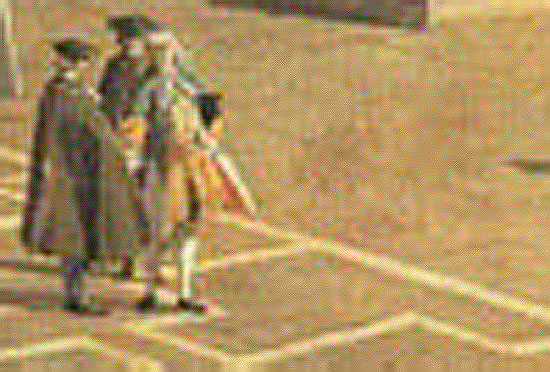
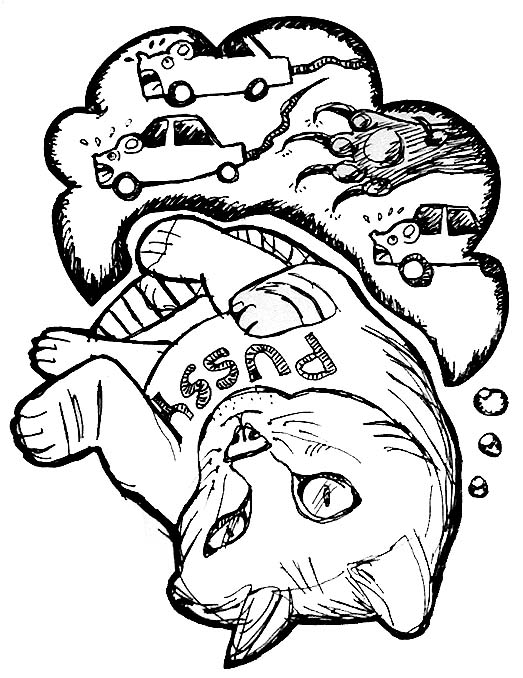
Notes on this blog: the tone has been changing here, as regular readers will have noticed. This is due to the fact that my day-work right now requires more long-term writing attention, which doesn't go so well with the bursts of research and articulation that hardcore blogging requires. I am sorry for the current lack of traditional art reviews and reportage, but I am not going to force it. For now, I will continue posting bits of my research, musing notes, and miscellaneous pictures.
I was moved and impressed by Steve Kurtz and Greg Bordowitz during their talk here on Saturday night. Kurtz is sardonic and eloquent and gave a good slide show on the history of Critical Art Ensemble's troubles with authority. The upshot being that art works that threaten to disrupt the flow of capital are more likely than not to draw negative attention from the powers that be. Bordowitz is like a can of pressurized charisma. He was passionate and articulate and a lot of what was said is sticking with me:
1) USA is working hard right now to establish an 'enemy within.' This case against Kurtz is a test for them to see if they can go after rebellious white middle class intellectuals as well as visible minorities and protestors. If the US government can gain enough oppressive power at home to subjugate its own middle class, then they are operating with even fewer checks and balances...bad news for US citizens (obviously) and super-bad news for the rest of us in the world too. The CAE Legal Defense Fund is in solidarity with other who are persecuted under the Patriot Act, and hopes to expand after the case in order to help more people.
2) There was refreshing talk about protest and the nature of rebellion. CAE has held for years that protesting in the streets is the not necessarily always the most effective way to voice dissent. Says Bordowitz, "I don't feel like performing rage anymore. I feel like performing deppression," and "the politics are here in this room, in what we say later to our co-workers and students." Says Kurtz, "what's important is the process of coming to the decision that you will no longer go along with what you know is wrong."
3) The question was raised, has rebellion itself been commodified to the extent that it is no longer possible to rebel? The answer was refreshingly sincere and complex. Yes it is possible, even vitally necessary to rebel. Kurtz spoke about how rebellion is a dynamic, an ongoing relationship with power, and that success is measured in increments, over time, as part of a continuum rather than a coup. Bordowitz pointed out that we operate under a false myth that, in any field, if we perform to competency we will succeed. In fact, very qualified, hard working intelligent people are not succeeding. So the question is raised...rebellion may be flawed but as opposed to what?
4) Bordowitz noted a rise of anti-intellectualism -- scary, and close to home -- as many charge that the use of expert language (research language, as Bordowitz put it) is elitist and exclusive, when in fact it can simply be seen as people communicating with one another in the technical terminiology of their trade. This is something that's been nagging at me more and more recently in all this (my) talk of accessibility and general audiences for art. I like intellectuals...they ("we," if I may presume...) come up with good and interesting ideas.
There was lots more good stuff too. If you attended the talk and anything stuck out for you (anything other than the stellar and mind-blowing job of moderation by your's truly) please post it in the comments. And if you want to help out with the legal defense fund, please click here and find out more.
I can't resist poaching this! So far my very favourite explanation of E=mc²
e=mc2 means energy (ie pure energy) is equal to mass. if a particle could be converted into energy, its a hell of a lot. i remember reading that a cup of water has more thatn enough energy to boil all of the oceans of the world. it also implies that nothing can travel at or above the speed of light, because it would take pure energy to accelerate a particle that far, because as an particle (or object) gets faster its mass increases. this isnt a very good explanation i know, but im a bit pissed (drunk if your american) and need to go to bed. anyways, read up stephen hawking and einstien if you can be bothered.
originally posted in June, 2004 by "dan" in the comments on a blog called "What Really Matters"

Steven Kurtz is coming to Toronto this Saturday to give a talk hosted by InterAccess (details here). Kurtz is a political artist -- a founding member of the collective Critical Art Ensemble -- and he was spuriously charged with bioterrorism last spring.
Here's a bit from the IA press release: "Kurtz’ appearance in Toronto offers the public the opportunity to hear Kurtz and Gregg Bordowitz, spokesperson for the CAE Defense Fund. They will speak about the work of CAE and the importance of creative freedom and privacy rights to educating the public about the effects of “militarized” biotechnology practices. A moderated discussion period will follow Kurtz's talk, led by Sally McKay."
CAE employ "Contestational Biology" as a means of bringing amateur citizens into the ethical discourse around biotechnology. Says CAE: "Within a very brief period of time, anyone who is modestly literate can learn the fundamentals of scientific study and ethics." The publisher Autonomedia puts out the collective's highly readable manifestos in the form of cute little books, and CAE also makes the papers available in PDF format on their website. The stuff is easy to read, and while they play with coporate terms and turns of phrase, the stance is only a tad tongue-in-cheek, offering very solid analysis on modes of resistance, the power dynamics of technological mythmaking, and functional info on how science works.
CAE is all about information, and the website provides an excellent access to the work. In the project "Free Range Grain", the group set up in Europe with a portable lab for testing food for genetic modifications. The equipment they use is detailed in a webtour, as well as photos of the event and an articulate, thorough position paper, which states: "Biotechnology and the science behind it have to be one of the most misunderstood areas of production in the cultural landscape. Myths, fantasy, misleading speculation, disinformation, and so on abound in the public sphere. Part of the reason for this state of communicative disorder is that the scientific process never makes a public appearance, only the miracle products as commodity fetish. We want to bring the routinized processes of science to the public to let them see them and act within them.
For information on the US federal case against CAE, and how you can help, go here.
NB: On the occasion of Kurtz' arrest back in May, I made a post on CAE quoting their publication Flesh Machine on the false promise of virtual reality.

Penrose Tiling
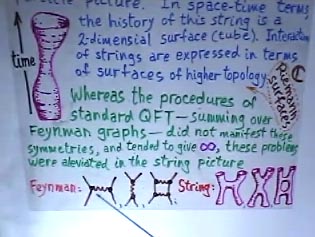

I made some poorly substantiated complaints about string theory in a recent post. Roger Penrose, who might be the most famous mathematician alive, has some complaints too, which carry just a little bit more weight than mine! There is a series of his lectures -- Fashion, Faith and Fantasy in the New Physics of the Universe -- available free online at www.princeton.edu/WebMedia/lectures/ [many many thanks to Marc Ngui for the tip].
String theory relies on the theory of supersymmetry as a "central ingredient." Supersymmetry calls for each particle to have a supersymmetric particle. But discovering these particles is proving very difficult. Says Penrose:
If you haven't seen the supersymmetric partner that's because we haven't built a powerful enough accelerator yet. As long as you don't find these things you just say "Well, we've got to build a more powerful machine," and it doesn't get disproved.Another famous fact about string theory is that it requires extra dimensions. Penrose says:
When I first heard about string theory I really thought it was a fantastic idea, I must say. It looked very beautiful...But then I learned it doesn't work unless space/time has 26 dimensions. Some people might say, "Oh well, space/time doesn't have 26 dimensions, so that's the end of that." But that wasn't the reaction of some people. They say, "Well, if it doesn't have 26 dimensions, we'll make it have 26 dimensions.But Penrose is far from dismissive of the theory. He recognises that it is compelling. In doing research he talked to Richard Thomas, a pure mathematician, who had the following to say:
Everytime there is a prediction made [by string theorists], and suitably interpreted mathematically, they turn out to be true. We have no idea why they're true, they must come from a higher reason.Penrose asks, how much of the current interest in string theory comes from fashion, and how much from physical motivations? He feels that it is not the latter, that string theory does not hold together, and is not a theory of quantum gravity. But, it's not just fashion either. Says Penrose:
I'm jolly glad that people are doing it, and something deep about physics is being revealed by these ideas.I've only watched the first lecture in the series so far, and it was excellent. The math and a lot of the concepts are beyond my grasp, but an untrained person like me can certainly follow the basic ideas, and the overhead projector diagrams and careful logic are a welcome antidote to the whizz-bang graphics of Brian Greene's Elegant Universe series.
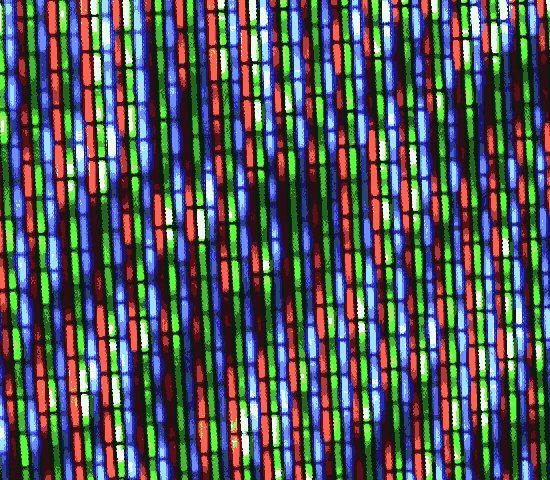 TV screen gif by Sally McKay |
Tom Sherman, "How To Watch Television", from Cultural Engineering (Ottawa: National Gallery of Canada, 1983), p.56Sit so close, you can't follow the action. The edits come too fast this close. Turn the channel selector. Turn it again.Turn the contrast up. If you have a focus control, turn it so the image is grainy. Toughen up the image. Just a touch of fine tuning ... press your face on the screen. Keep your eyes open. It's beautitul up close. You can feel the charge on your face. You can sense it when you close your eyes. The cool light is red inside. |

Goodridge Roberts, Bright Day, Georgian Bay, 1961. Royal Bank Financial Group's Corporate Art Collection |
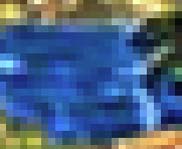 (detail) |

B.C. Binning, Atomic Foundation, 1950. Artists 4 Kids, Original Prints by Canada's Finest Contemporary Artists |  (detail) |
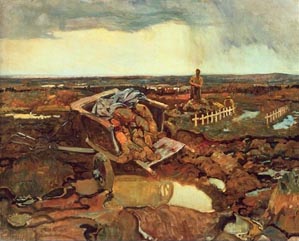
Frederick H. Varley, For What? Canada's Digital Collections |
 (detail) |
| George Elliot (1953): "Colour of course, is the first element to be sacrificed if painting is put in front of the television camera. Can you imagine a Goodridge Roberts landscape without Roberts' very private blues and greens? Binning's subtleties of colour are an important part of his charm. Varley's disturbing palette of piercing greens, blues, cold pinks and earth are essential to the uniqueness of Varley. [...] A painting needs an intellectual presence before it can work its magic. Placing anything between the viewer and the painting kills the viewer." Excerpts from: George Elliot, "A Warning to Artists," in Canadian Art, Spring 1953, p.10-6 (as reprinted in Video re/View, Peggy Gale and Lisa Steele, eds., Toronto: Art Metropole/VTape, 1996, p.20) | |
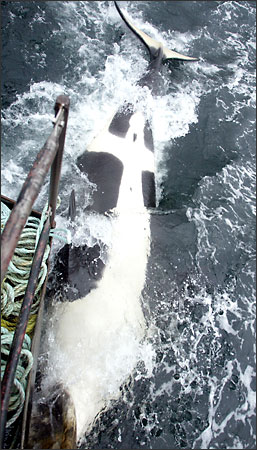 |
 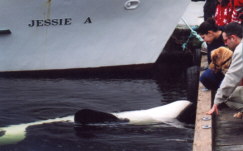 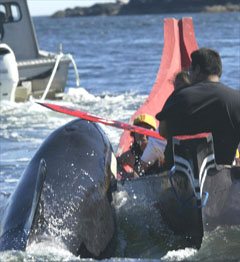 |
This killer whale has been hanging out at Gold River in Nootka Sound (Vancouver Island) since 2001, bumping boats and socialising with humans. The federal Department of Fisheries and Oceans wants to reunite "Luna" with his pod. The local Mowachaht-Muchalaht First Nation want to let "Tsux'iit" make up his own mind about what to do next. The two groups have come to a very nifty agreement, which basically involves letting the whale hang out if the Mowachaht-Muchalaht agree to keep an eye on it (with some financial support and emergency backup from DFO). The story is back in the news (today's Globe and Mail) because the contract is up for renewal, and the Mowachaht-Muchalaht want to leave the whale alone for at least another seaon. According to their website:
The whale appeared in Nootka Sound in the summer of 2001, soon after the Mowachaht/Muchalaht lost a great leader, Ambrose Maquinna. Chief Maquinna said he would return to this world as a killer whale. The Mowachaht/Muchalaht believe the young whale carries his spirit and has, for now, chosen Nootka Sound for his home. To the Mowachaht-Muchalaht, killer whales are the guardians of the laws of the sea, and their choices should be respected.There is a potlatch next November to honour Chief Maquinna, and the natives want to let Luna hang around at least til then. The reincarnation angle has more emotional clout than simply suggesting "let's just go with whatever the whale wants to do" (which would work for me), and probably accounts in large part for the DFO's willingness to compromise thus far.
I got mad today, however, because according to the papers, PUBLIC SAFETY is stated as the main reason the DFO wants to remove the whale from the bay. Granted, the whale is pretty boisterous and keeps bumping into people's boats and wrecking private property. But really now, how hypocritical can we imperialist friggin' human beings get?! BC is all about wilderness tourism. Snowboarders and skiers break their legs, freeze their ears, and become engulfed by landslides; hikers sprain their ankles, contract sunstroke, and, get mauled by grizzlies; surfers drown, and get sand-rash. Can the threat of somebody getting injured by this one whale really be such a pressing issue? People's properties --boats in the marina--have been getting damaged, and other whales have been returned to their pods (with varying degrees of success). The cachet of cutting-edge marine biology holds a certain sway in west coast culture, and of course there is no more famous rally cry for white environmentalists than "save the whales" (never mind that they're mostly already full of PCBs and chased around by flocks of tourists in zodiacs all day). I'm sure there are more reasons, but the sum of the parts is essentially this: the global economic model, with its who's-in-and-who's-out hegemony is moving along nicely and we, who incidentally benefit the most, are moving along with it. Your so-called radical big ideas are all very well, but unfortunately, they pose a THREAT TO PUBLIC SAFETY. grrrrr.
In my recent web puttering I came across a few First Nations oriented forums that mention the issue. I like very much what Immortal Thunder had to say in response to an impassioned plea to the effect that the issue is besmirching the First Nations in the eyes of just about everyone and they should back off:
These misinformed ecologists and animal rights groups should blame DFO and eco-tourism outfits, for promoting the public observation and interaction with wild life, as a commercial venture and a form of entertainment. The situation that endangers the lives of the curious and uniformed was created by them not the native people.
Schwarz' 2004 top ten
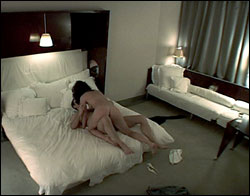
1 - wfmu top ten list
2 - andrea fraser from walter robinson's top ten list
3 - red states come out
4 - sherry levine continues to do mediocre work
5 - richard prince continues to do mediocre work (spot trend?)
6 - mediocre shipping container houses hit the nyc art scene and get a mediocre review in architects news paper
7 - frank lives in a drat hole on dave's page
8 - selma actually knows about art and architecture
9 - terminal five show from tom moody's top ten list
10 - my show of a ten year old piece (my first 1000 wrenches) in lori bortz's garage, a studio visit by bob nickas and palemale starts rebuilding his nest
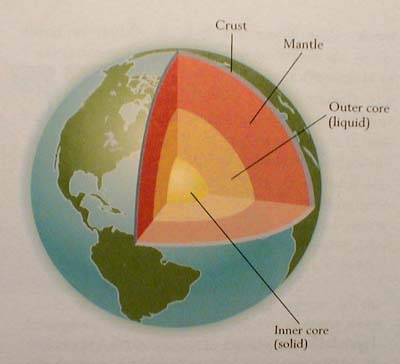 |
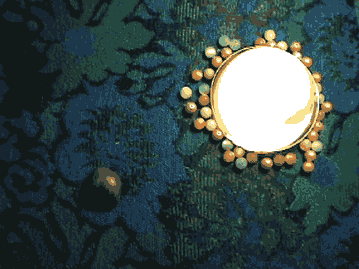 |
Xandra Eden’s 10 for 2004 (in no particular order)
1. Mike Kelley, The Uncanny, MUMOK, Vienna and Tate Liverpool
http://www.tate.org.uk/international/kelley.htm
2. Scott Lyall, The Canon Copiers, Susan Hobbs Gallery, Toronto
3. Gelatin, Meyer Kainer Gallery, Vienna
4. Jane Jacobs, Dark Age Ahead
http://www.randomhouse.com/catalog/display.pperl?1400062322
5. Reverend Billy, XSPACE, 7a-11d Performance Art Festival
http://www.revbilly.com/
6. Maura Doyle, There's a New Boulder in Town + Toronto's Erratic Boulders - Downtown Map, Toronto Sculpture Garden
http://www.torontosculpturegarden.com/currentexhibit.htm
7. Darren O’Donnell, A Suicide-Site Guide to the City, Toronto/Vancouver/Edinburgh
http://www.buddiesinbadtimestheatre.com/events/show.cfm?i_key=27
8. Olafur Eliasson, The Weather Project, Turbine Hall, Tate Modern, London
http://www.tate.org.uk/modern/exhibitions/eliasson/
9. Tone Nielsen & Morten Goll, Niagara Falls Artist Host Program, Mercer Union, Toronto
http://www.mercerunion.org
10. Rodney Graham, Rheinmetall/Victoria 8, 303 Gallery, New York
http://www.303gallery.com/artists/graham/index.html
Rob Cruickshank is installing work at Fly Gallery this weekend. I've seen a tantalizing blue spiral in mpeg preview form, and I'm looking forward to the real thing. I very much liked the piece Rob and Sarah Peebles did this summer, and of course if you don't regularly check his blog, Endless Parade of Excellence, then you are working far far too hard and really ought to adjust your priorities. Fly is operated by Tanya Read (see post below) and fellow artist Scott Caruthers. It's a walk-by window display on Queen West, between The Drake Hotel and the Gladstone Hotel, north side. If you are in Toronto, go by Fly in January and take a look.
NB: Let me declare up front that Rob, Tanya, and Scott are all friends of mine, and I will be showing at Fly Gallery myself in April. More posts about artists I've never met coming soon in 2005.
There's a great big story about Mr. Nobody in the Globe today! Gary Michael Dault did a good job filling in the back story on the enigmatic little guy, and there's some nice quotes from Tanya Read, Mr. Nobody's Frankenstein-like creator.
[Mr. Nobody's appeal] has a lot to do with his existential determination, in the way he just keeps going, persisting in the face of futility.Last spring I wrote a short exhibition essay for Tanya Read's show at Truck Gallery in Calgary. Here's a quote:
Recently, Mr. Nobody has acquired an Ignatz mouse, a yin for his yang, a perfect foil. In the film Juggernaut, a monstrous ball appears with dots that might be eyes, mouth, snout or belly but never quite resolving into form, an indominatable abstraction that rolls over Mr. Nobody and leaves him flat and blinking.You can watch Juggernaut online here at the Mr. Nobody website. NB: I also made a wee post on Mr. Nobody here back in May.